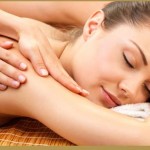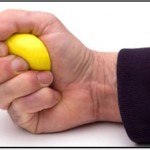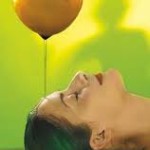Relax… Because You Have To
The holiday season has already begun. Heavy traffic can be experienced everywhere. Many people have been going to malls  and department stores to buy gifts. There’s so much stress, even at your own home. Planning a sumptuous meal for your family and friends on Christmas and maybe even on New Year. Buying groceries is also a challenge since there are so many people buying theirs too. Gifts must be prepared and in case you haven’t bought them, going to malls and stores is a chore.
and department stores to buy gifts. There’s so much stress, even at your own home. Planning a sumptuous meal for your family and friends on Christmas and maybe even on New Year. Buying groceries is also a challenge since there are so many people buying theirs too. Gifts must be prepared and in case you haven’t bought them, going to malls and stores is a chore.
At any place or event you might go, it’s a fact that stress is inevitable. Stress is the emotional and physical way in which we respond to pressure. It can either be brought by positive or negative stressors. Positive stressors are those wherein positive events occurred like labor and delivery of a baby. Negative stressors are those that we experience whenever we rush to the office or work place because we forget to set the alarm clock or when rushing to the store to buy the last gift, especially this holiday season.
Stress is a situation we cannot avoid in our daily lives, that’s why proper management and correct coping must be done.  Relaxation is important because it decreases the effects of stress inside the body. It helps lower the blood pressure, improves concentration and attention span, and increases the blood circulation in the body.
Relaxation is important because it decreases the effects of stress inside the body. It helps lower the blood pressure, improves concentration and attention span, and increases the blood circulation in the body.
Relaxation techniques and exercises can be of great help in reducing the tension felt whenever stress occurs. In determining the right relaxation technique, you have to consider your specific needs, personal preference, lifestyle, fitness level and the way you react to stress.
Generally, relaxation techniques aim on refocusing your attention and concentration to something more calming. It also focuses on increasing your awareness to your own body.
Some of the techniques include the following:
Progressive muscle relaxation technique
This is a two-step process that involves tensing a specific muscle of your body. This technique is done by tensing the muscles  in your toes, progressing up to your neck and then on the head. If you are right-handed, start on your right toe. But if you are left-handed, start otherwise. Do this for 10-15 seconds. You can do it repeatedly to release the tension. This technique helps counteract the muscle tension when in stress.
in your toes, progressing up to your neck and then on the head. If you are right-handed, start on your right toe. But if you are left-handed, start otherwise. Do this for 10-15 seconds. You can do it repeatedly to release the tension. This technique helps counteract the muscle tension when in stress.
According to Bourne,E.J.,(1995) ‘The Anxiety and Phobia Workbook – A step by step program for curing yourself of extreme anxiety, panic attacks and phobias’, MJF Books, New York., p.65-76 passim
( http://www.anxietyhelp.com.au/treatment/relaxation_therapy/treatment.html )
Here are some guidelines when practicing this technique:
|
Breathing meditation
 Breathing meditation technique is an easy way of relieving stress. It can also be combined to other relaxation methods like aroma therapy. When performing deep breathing, you must breathe deeply from your abdomen. Doing this can make you inhale more oxygen rather than shallow breathing. Because the more oxygen you inhale, the less tense you become, thus making you relaxed and stay calm.
Breathing meditation technique is an easy way of relieving stress. It can also be combined to other relaxation methods like aroma therapy. When performing deep breathing, you must breathe deeply from your abdomen. Doing this can make you inhale more oxygen rather than shallow breathing. Because the more oxygen you inhale, the less tense you become, thus making you relaxed and stay calm.
Guided Imagery
In this technique, images of calm and peaceful environment are formed into your mind. Guided imagery or visualization can also stimulate your other senses. If you are able to visualize yourself relaxing at the park, think about the soft breeze that reaches through your skin and the warmth of the sun on your body. You may want to close your eyes, go to a quiet place and wear loose clothing.
Other relaxation techniques:
- Yoga

- Tai chi
- Aroma therapy
- Massage
Relaxation is essential after a stressful event. These techniques may help you during this season.
Holidays can stress you out but don’t let that get over you. Conquer stress and deal with it.
Relax
